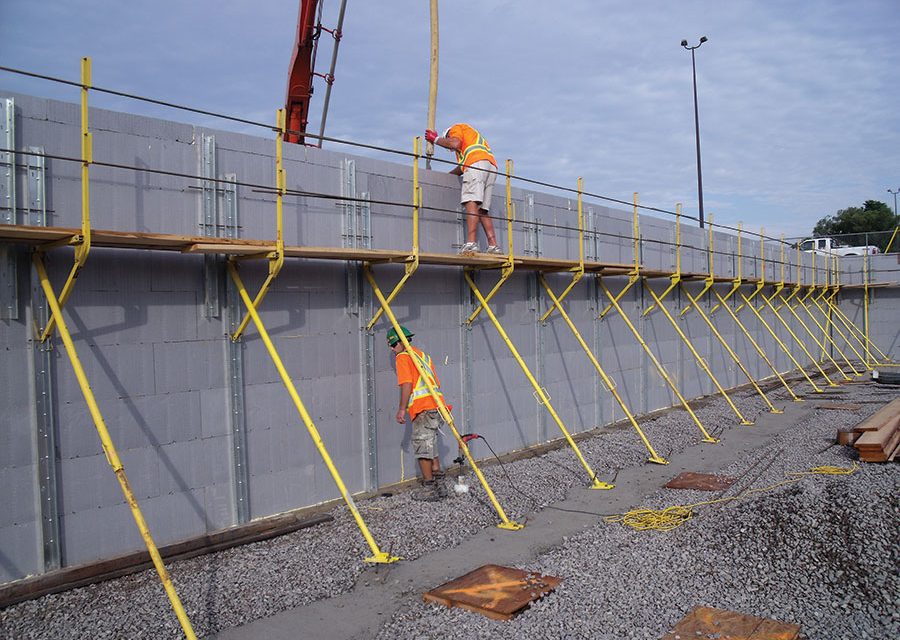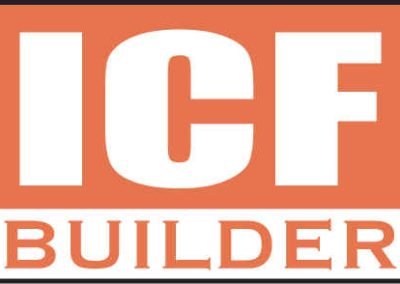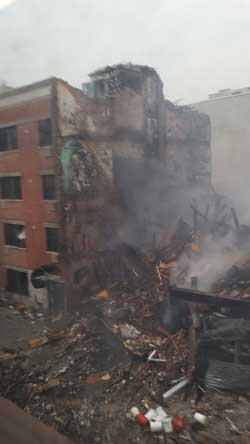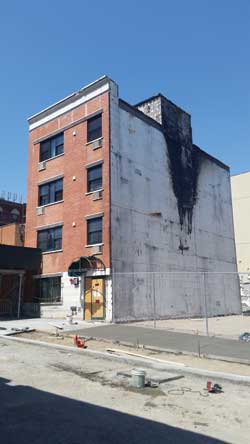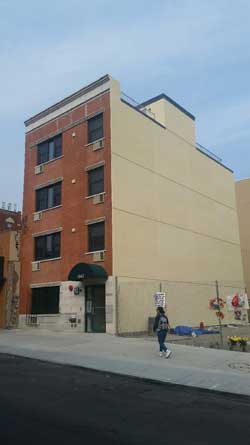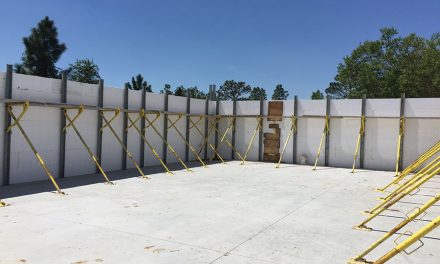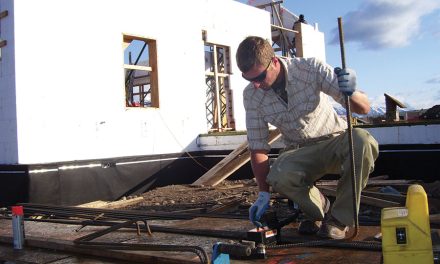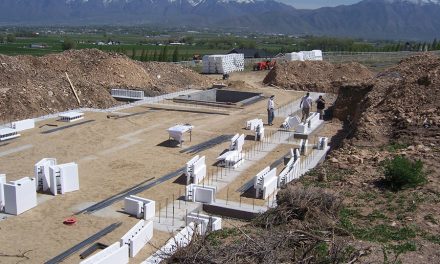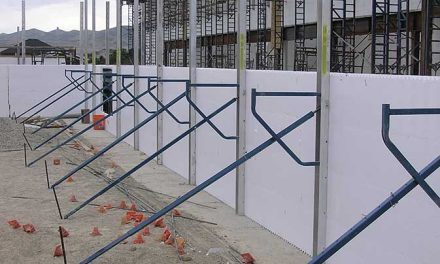Turnbuckle braces not only helps keep your walls straight and plumb, but they can also play a major role in improving company profitability and help win bids on larger projects.
The importance of a good ICF wall bracing system cannot be overstated.
“A wall alignment bracing system is as much a standard tool for building with ICFs as a paintbrush is to a painter,” says Ian Giesler. “If you think that you can build perfect walls without bracing systems, you’re only kidding yourself.”
Even stemwalls three or four courses high require bracing. The walls may look plumb, square and level without bracing, but typically they aren’t.
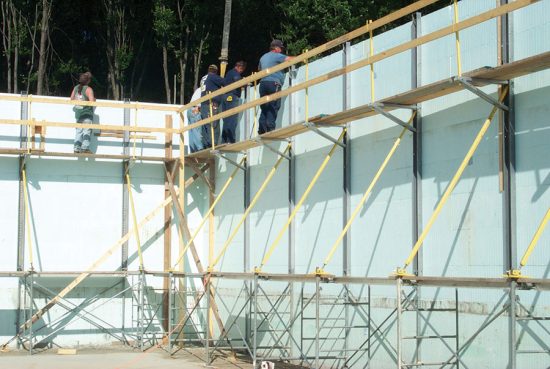
Even more expensive than the repair—or the teardown and rebuild—is the cost of lost work. When a builder tries to sell clients on the advantages of ICFs, some “nightmare job” in the region comes up. The developer says something like, ‘Yep, I saw that job. Those walls were the waviest walls I had ever seen. I even waved back in disgust as I got back in the truck and drove away. I knew foam forms were a crazy idea. I wouldn’t touch ICFs with a ten foot pole.”
It happens with alarming frequency. Over the past ten years, dozens—probably hundreds—of jobs have been lost because of shoddy bracing. And it affects not only that contractor, but the entire industry. In some regions, ICFs have been effectively locked out of the market because of a single thoughtless builder who tried to shave a few hundred dollars off his bid.
It doesn’t have to be this way. Over the last decade, dozens of high-quality ICF bracing systems have been developed, and are surprisingly affordable. Most ICF distributors will also rent bracing, conveniently packaged in a crate or on a trailer. Many will rent the bracing even if the forms were purchased from a competitor; they understand that they have an interest in making every job successful.
Simply put, ICF installers can’t afford not to use some sort of quality, adjustable ICF brace. “The goal of the ICF contractor should be to do a good job, and do it profitably,” says Jeff Bresler, sales manager for Monobrace. “Turnbuckle bracing helps him meet both these goals.
What to Look For
More than half-a-dozen bracing systems are currently on the market, each with their own unique traits. The turnbuckles, type of storage system, and pricing varies widely as well. While installers may weigh factors differently than the distributor, a few traits always rise to the top of the list.
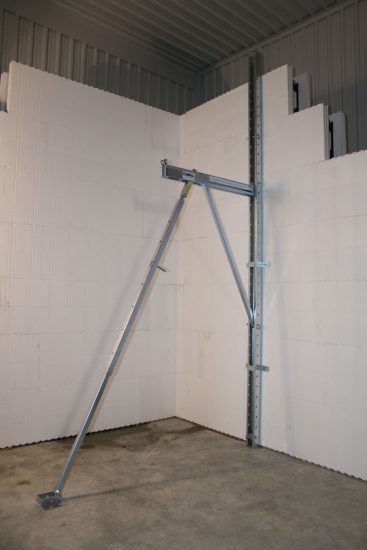
“You want something that doesn’t give,” says Bresler. “Steel, even though its heavier, is far more rigid.”
Ken Williams, at Giraffe Brace, agrees. “Heavy gauge steel lets you brace heavier walls,” he says. “You can pour thicker cores and higher lifts. It also allows for more loading on the walls. When you have three guys on the scaffold during the pour, and those strongbacks are flexing, it will affect the straightness of the finished wall.”
Durability—A closely related factor is the durability of the system. This is especially important for distributors planning a bracing rental business.
“You want low- or no-maintenance bracing,” says Williams. Think about the abuse the system will take. You don’t want to be concerned about the condition the equipment comes back in.”
He cites the example of a typical teardown after pouring the second story walls. “The guy typically takes the strongback and tosses it out the window,” he says, “and when it hits the ground it often buckles or bends if it’s too lightweight.”
Other areas to check are the turnbuckles (are they protected from concrete splatter?) and the foot plates (stamped vs. welded).
Williams recommends checking if the bracing manufacturer that offers a written warranty, and the availability and cost of replacement parts.
“You want a system that doesn’t wear out,” he says. “Nobody wants to replace their equipment every two or three years.”
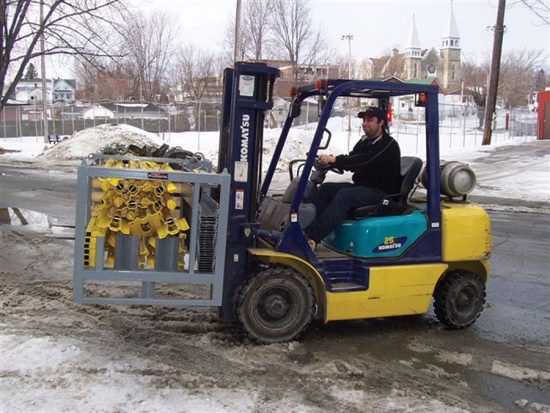
Says a retired Wyoming contractor, “I think the old steel braces worked best, but they worked me the hardest. I shudder thinking of the weight.”
Another says, “I need to be able to haul three or four guys, at least 85 braces, 300 ICF blocks, and all the tools needed, at highway speeds with a 3/4 ton pick-up… Extruded aluminum strongbacks are the way to go in my opinion. They bounce back, take a beating, and don’t rust out.”
Williams, at Giraffe Brace, says aluminum equipment may work for the careful contractor. “If you’re not doing too many jobs, and you’re the guy personally managing the equipment, it may work well.”
Others are less generous. “I don’t care if they are light if they rust out or bend easily,” says the Wyoming builder. “Even if they are light and durable but flex when a 220 pound guy walks on them, performance has been sacrificed. What’s the use doing all the hard work if the finished product is only as good as the (inadequate) bracing?”
Turnbuckles—Many claims are made about why one brand’s turnbuckles are better than another, but it comes down to one thing: how easily does it adjust the wall?
For starters, how far will it move the wall? Most brands have a length of travel of around six to eight inches. Some braces use coil thread, some standard thread, which affects how many turns per inch are required.
The method of turning also varies. Giraffe and the discontinued Arxx brace use circular tubing with welded handles. Plumwall can be manipulated with a cordless drill. Reechcraft uses square tubing, and a few require a wrench.
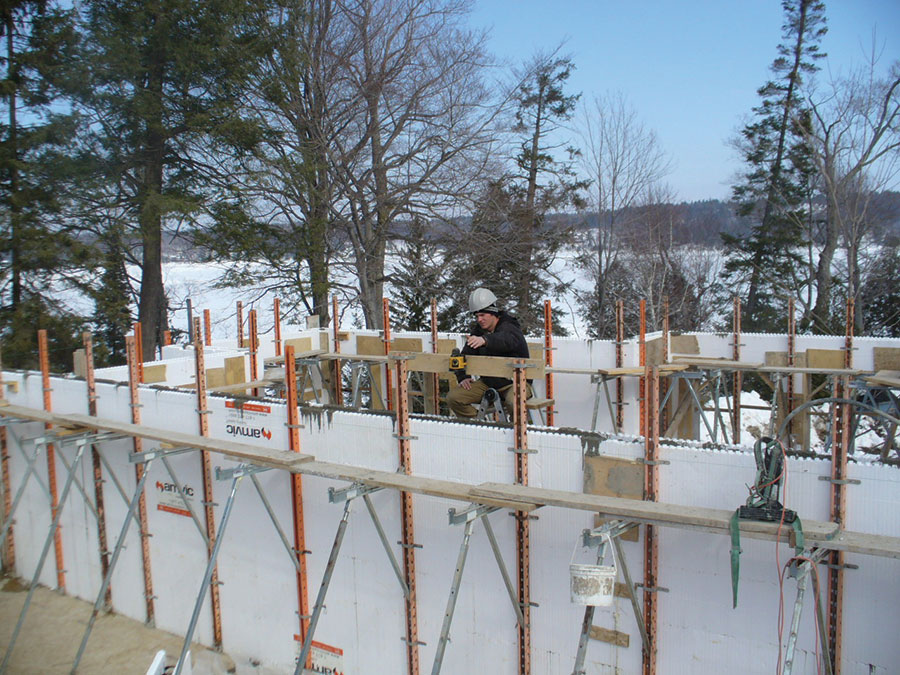
More important is protecting the turnbuckle from splatter. Giraffe uses an internal jack system to protect the threads. Others, like Hilltop, put the threads at the bottom of the turnbuckle so concrete splatter is not an issue.
Storage System—Even for the busiest installer or distributor, braces will spend more time in storage than they will on the wall, so convenient, compact storage is a prime consideration. Giraffe Brace set a new standard when they unveiled their crate system in 2007. Others have followed suit; Plumwall’s trailer-mounted bracing set has attracted a good deal of attention.

Williams, at Giraffe, agrees that storage is a key consideration. “Especially for bracing rental operations, a good inventory and storage system can save literally hours of work.”
Versatility—Finally, consider the versatility and completeness of the equipment as well as the price. Does it include a scaffolding bracket or built-in safety rail? Does it come with ground stakes or is the user expected to have rebar on-hand? How many additional components are needed to convert it for stemwall and tall-wall applications?
Bottom Line Impact
Giesler, the Texas-based ICF installer summarizes, “Straight, plumb and square walls make successful jobs easier to attain. The cost of a typical factory-made bracing system may cost as little as $100 to a high of $200 per set. In many areas bracing can be rented even more cheaply. That’s a small price to pay to ensure the wall is built right.”
Williams, at Giraffe, says good bracing can also build customer loyalty. “Quality bracing draws a better customer,” he says. “If dealers can provide their contractor/customers with a system that doesn’t bend, come apart, or waste their time looking for components, they’re more likely to stick with that distributor. At the end of the day it all comes down to the quality of the equipment.”
Project Statistics
Construction Team
Fast Facts

